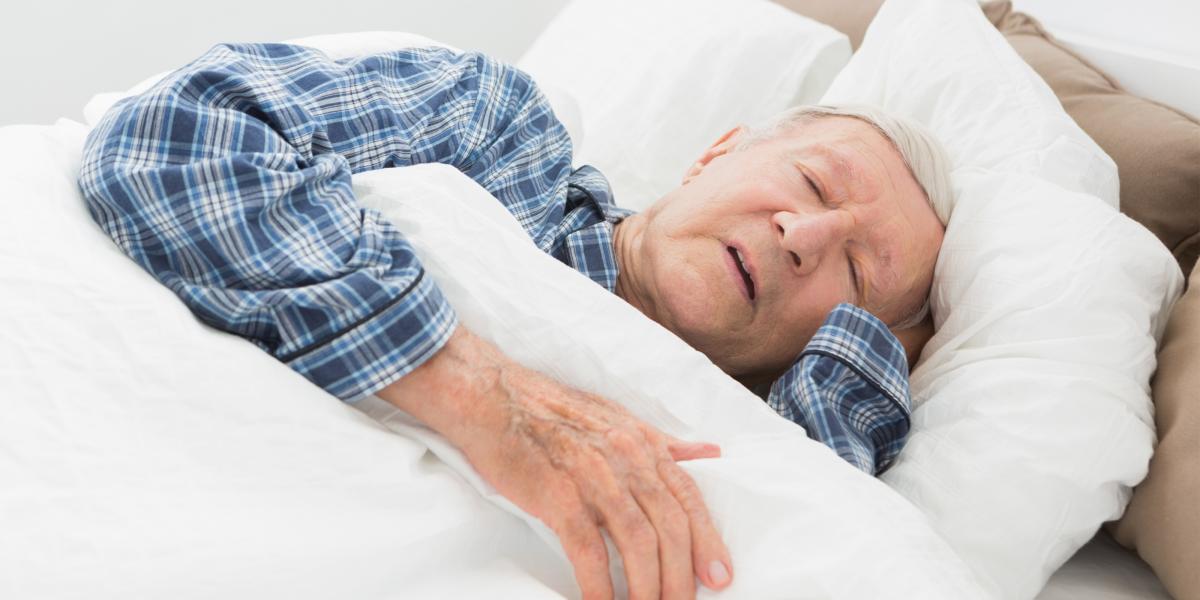Dreams of Sleep and Health
Imagine a room full of 100 middle-aged and older Americans. How could you predict which of them will be hospitalized or enter a nursing home within the next two years?
You might ask them about well-known risks like heart disease or diabetes. Do they smoke or is their household income relatively low? But you might not think to ask how well they sleep.
Poor sleep quality is a powerful predictor of health care utilization among Americans aged 55 and older, above and beyond whatever other risk factors they might carry, according to a recent analysis by Bloomberg School researchers and others. Older Americans who report having two or more symptoms of insomnia have 46 percent greater odds of being hospitalized during the subsequent two years than people with no insomnia symptoms.
Many studies over the last two decades have found that roughly half of older Americans sleep poorly, says Christopher N. Kaufmann, a Mental Health doctoral student. But older patients may not recognize the role sleep plays in their overall health, and may underreport sleep difficulties when they speak with their doctors.
For the paper published online in May in the Journals of Gerontology Series A: Medical Sciences, Kaufmann and his colleagues drew on data concerning more than 14,000 older Americans tracked by the Health and Retirement Study, a federally financed longitudinal study.
Poor pillow time can predict future hospitalization risk.
When asked about their sleep quality in 2006, 41 percent of the participants reported at least one symptom of insomnia. When asked two years later about their recent use of health services, the participants with poorer sleep quality were significantly more likely to report having been hospitalized, using home health care services or having entered a nursing home.
The pattern remained significant for hospitalization and home health care use even after Kaufmann and his colleagues controlled for demographic factors and for histories of cancer, diabetes, heart attack, hypertension, osteoarthritis or stroke.
“Treating sleep disturbances might be a way of not only promoting health but decreasing health expenditures as our population ages,” says Adam P. Spira, PhD, a Mental Health assistant professor and senior author on the study. (Other authors include Ramin Mojtabai, a Mental Health associate professor, and postdoc Sarah L. Canham, as well as researchers from three other universities.)
Spira has led several studies of insomnia among older adults, including research in which participants wear wrist devices that can provide objective data about sleep quality.
Curing insomnia is, of course, easier said than done. Several organizations have recently raised warnings about certain medications that are often prescribed to improve older adults’ sleep. Those medications too often cause drowsiness and light-headedness, raising the risk of falls and hip fractures. For his dissertation, Kaufmann plans to analyze data from a large, nationally representative pool in order to gain a deeper understanding of those safety risks.
Spira, for his part, hopes that more health providers will be trained in non-pharmacological strategies for improving older patients’ sleep, including models of cognitive-behavioral therapy that have proven effective among older adults.
One such technique is sleep-restriction therapy, in which patients go to bed and rise at scheduled times, and spend no other time in bed. “Older people who develop chronic insomnia often try to compensate by spending lots of time in bed,” Spira says. “But they end up dissociating sleep from their beds. If you restrict people’s time in bed to the time they’re able to sleep, you can start to build much healthier sleep patterns.”
